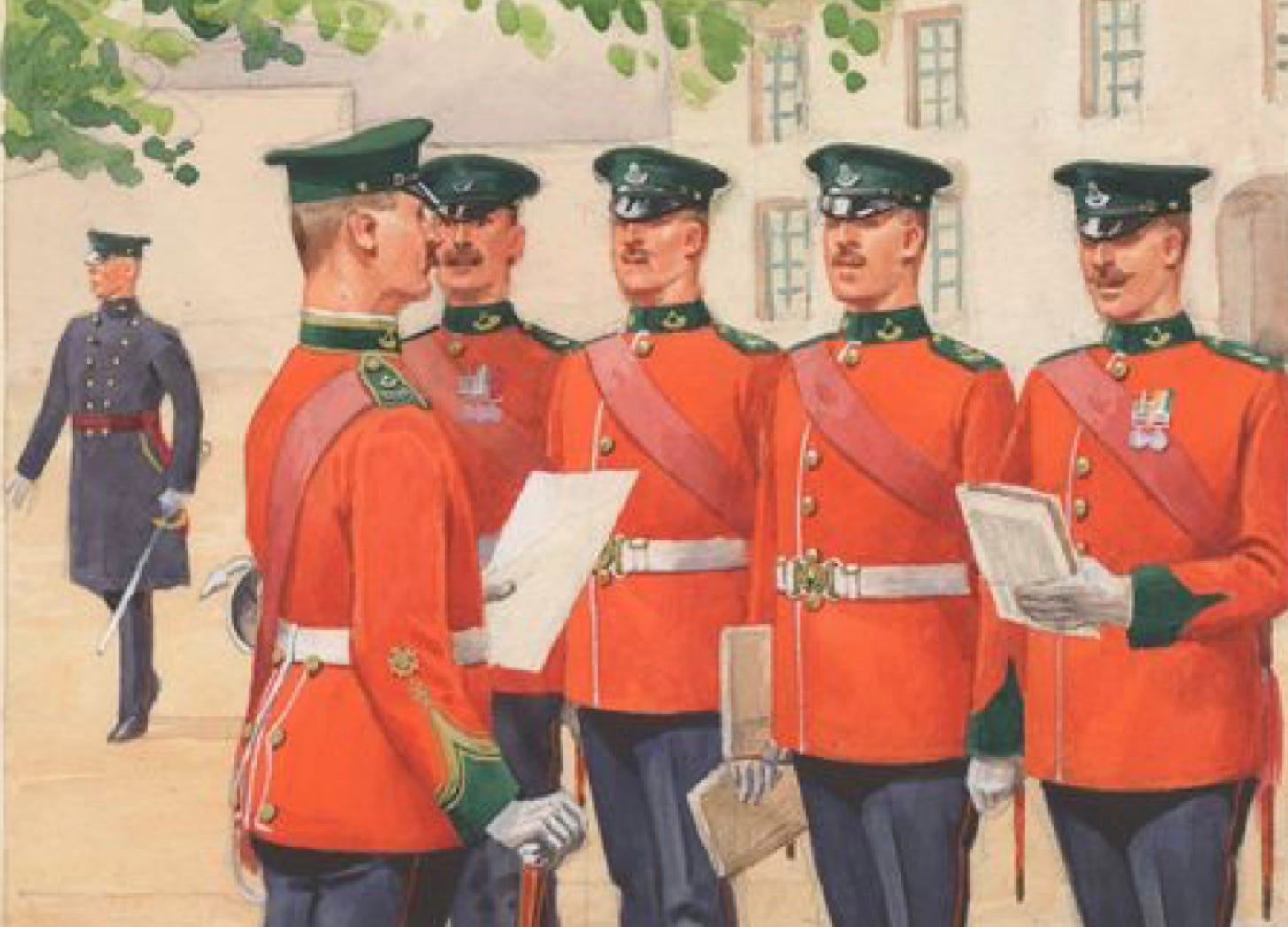This post completes the serialization of Battalion Organization, an article, published in 1912, in the Journal of the Royal United Service Institution, that argued for the replacement of the traditional eight-company battalion with a unit made up of four much larger companies. A copy of the original article can be found here, at the Military Learning Library.
Links to earlier posts in this series can be found on the following page:
Conclusion
When the tentative suggestions which have been put forward today have been investigated and sifted by the General Staff, I am confident that it will be found that the main proposals can be carried out without any great expenditure of money or grave disturbance of individual officers and noncommissioned officers. With careful forethought the changes could probably be brought about in the course of a week, and if the selected week were either before the commencement or after the termination of collective training the inconvenience would be reduced to a minimum. The necessary corrections in our various military manuals need not constitute a serious difficulty, and the experience gained after the transition would enable us to amend future editions with advantage.
Let us now look at a battalion as it will stand under its new conditions in the Expeditionary Force of the future. In war we claim for it primarily a capacity to strike hard, and strike with cumulative intensity throughout an attack, by reason of the cohesion which its commanding officer will maintain between his four companies, and by reason of the co-operative fire effect of the sections in the firing line.
We claim that by transferring tradesmen and others to a permanent headquarter sec- tion, we shall free the companies of an incubus which paralyses their well being for eleven months in the year, yet compels them during the twelfth month to train non-commissioned officers and men who will never fight in their ranks. We claim that the new companies and sections will be organized military unit, capable of performing duties, undertaking fatigues, and mounting guard under their own officers and non-commissioned officers, instead of being broken up, as they inevitably are-at present, whenever a detail has to be provided. We wish to break through over-centralization in the orderly room, and delegate more power, responsibility and opportunity to the companies
We claim that the method of a logical and simple chain of command from the C.O. to the private, to facilitate the supreme act of mobilization, and enable our infantry to pass from peace to war without confusion, and to incorporate their reservists without indigestion.
We claim that, notwithstanding the ever-increasing extra regimental duties of peace and the inevitable losses occasioned by war, every unit commander, from corporal to colonel, has his second-in-command on the spot, trained in his ideas and ready to step into his shoes: yet these substitutes are each allotted specific duties for which they are continually held personally responsible.
Finally, we commend this scheme to the consideration of the higher authorities with the conviction that they will sooner or later adopt its general principles. We officers who are daily concerned with the training of troops are beginning to realize how much has been done for us during the few years that have elapsed since the General Staff came into being.
We recognize how immense their task has been in re-organizing the higher commands of the army, and in modernizing our methods, and we are lost in admiration of their latest production, the Manual of Infantry Training. It breathes the true spirit of British infantry, and has dissolved any doubts we may have had regarding co-operative fire tactics. We hope the General Staff can now turn their attention to battalion organization, and thereby greatly increase the fighting value of our infantry.
My last word will be: either do this thing quite thoroughly or do not touch it at all.
Brigadier-General Frederick Ivor Maxse
Commanding, 1st Guards Brigade
Postscript: In October of 1913, the Regular Army adopted the four-company battalion. In the course of the First World War, this system was extended to the Territorial Force and the armies of the self-governing dominions.
Biographical Note: In August of 1914, Brigadier-General Maxse (1862-1958) went to war with the 1st Guards Brigade. In November of 1918, after commanding an infantry division and an army corps, he was serving as Inspector General of Infantry, a post in which he was able to put his passion for the details of military organization to good use.
For Further Reading:
To Subscribe, Support, or Share:








